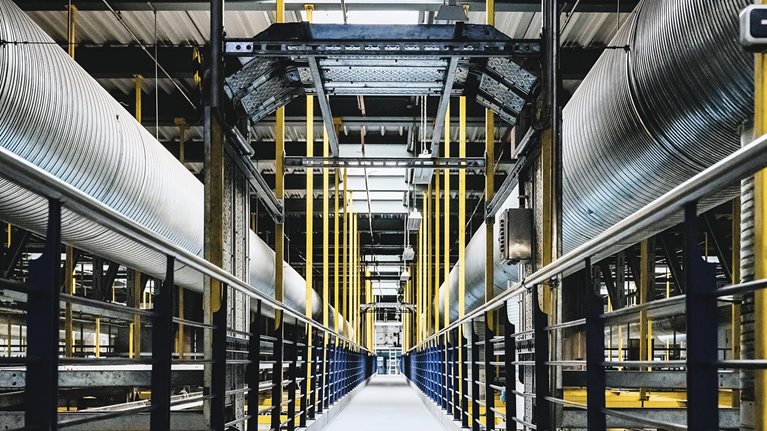In May 2020, much of the world was still in the grip of the first wave of the COVID-19 pandemic. Lockdowns, shelter-in-place orders, and travel restrictions were disrupting activity in every part of the economy. Demand evaporated in some categories and skyrocketed in others. As they struggled to keep their businesses running, companies were planning significant strategic changes to the configuration and operation of their supply chains. When we surveyed senior supply-chain executives from across industries and geographies, 93 percent of respondents told us that they intended to make their supply chains far more flexible, agile, and resilient.
Twelve months later, in the second quarter of 2021, we repeated our survey with a similarly diverse group of supply-chain leaders. This time, we asked respondents to describe the steps they had taken to shore up their supply chains over the past year, how those changes compared with the plans they drew up earlier in the crisis, and how they expect their supply chains to further evolve in the coming months and years.
It’s quicker to build inventories than factories
In our 2020 survey, just over three-quarters of respondents told us they planned to improve resilience through physical changes to their supply-chain footprints. By this year, an overwhelming majority (92 percent) said that they had done so.
But our survey revealed significant shifts in footprint strategy. Last year, most companies planned to pull multiple levers in their efforts to improve supply-chain resilience, combining increases in the inventory of critical products, components, and materials with efforts to diversify supply bases while localizing or regionalizing supply and production networks. In practice, companies were much more likely than expected to increase inventories, and much less likely either to diversify supply bases (with raw-material supply being a notable exception) or to implement nearshoring or regionalization strategies (Exhibit 1).

Different industries have responded to the resilience challenge in markedly different ways. Healthcare players stand out as resilience leaders. They applied the broadest range of measures, with 60 percent of healthcare respondents saying they had regionalized their supply chains and 33 percent having moved production closer to end markets. By contrast, only 22 percent of automotive, aerospace, and defense players had regionalized production, even though more than three-quarters of them prioritized this approach in their answers to the 2020 survey. Chemicals and commodity players made the smallest overall changes to their supply-chain footprints during the past year.
Some of these differences among sectors can be attributed to the structural characteristics of the industries involved: for example, chemicals and metals are asset-intensive sectors with large, expensive production sites. Investments in new capacity can take years to complete. Other respondents told us that they had struggled to find suitable suppliers to support their localization or near-shoring plans.
Despite these challenges, regionalization remains a priority for most companies. Almost 90 percent of respondents told us that they expect to pursue some degree of regionalization during the next three years, and 100 percent of respondents from both the healthcare and the engineering, construction, and infrastructure sectors said the approach was relevant to their sector.
Risk management: More breadth, not enough depth
The pandemic pushed risk to the top of virtually every corporate agenda. For the first time, most respondents (95 percent) say they have formal supply-chain risk-management processes. A further 59 percent of companies say they have adopted new supply-chain risk management-practices over the past 12 months. A small minority (4 percent) set up a new risk-management function from scratch, but most respondents say they have strengthened existing capabilities.
Would you like to learn more about our Operations Practice?
The actions taken by companies varied according to the precrisis maturity of their supply-chain risk-management capabilities. Companies with little or no risk-management experience tended to invest in new software tools, while higher-maturity organizations mainly focused on the implementation of new practices.
The proactive monitoring of supplier risks was the primary focus of these efforts, yet significant blind spots remain in most companies’ supply-chain risk-management setups. Just under half of the companies in our survey say they understand the location of their tier-one suppliers and the key risks those suppliers face. But only 2 percent can make the same claim about suppliers in the third tier and beyond. That matters because many of today’s most pressing supply shortages, such as semiconductors, happen in these deeper supply-chain tiers (Exhibit 2).

Supply-chain planning: A test for technology and organization
The transition to remote working was one of the most immediate and pronounced effects of pandemic-era restrictions on mobility and access to workplaces. Broadly, respondents to our survey believe they managed that transition well, with 58 percent reporting good supply-chain-planning performance over the past year. The remaining 42 percent of respondents told us that remote working had led to delays in supply-chain decision making.
The success of an organization’s planning was strongly linked to its use of modern digital tools, especially advanced analytics. Compared with organizations that reported problems, successful companies were 2.5 times more likely to report they had preexisting advanced-analytics capabilities. Of the companies that had difficulties managing their supply chains during the crisis, 71 percent say they are ramping up their use of advanced analytics.
The benefits of advanced analytics in supply-chain management are now being recognized across industries. With the sole exception of the healthcare sector, more than 50 percent of respondents in every industry say they have implemented additional analytics approaches during the past 12 months (Exhibit 3). The biggest shifts occurred in industries that were the lowest users of these approaches before the pandemic. In commodities, for example, 75 percent of companies are currently increasing their use, with the remaining 25 percent saying they plan to do so in the future. The only sector in which the race to adopt advanced analytics techniques shows signs of slowing down is in advanced electronics and high tech, where their adoption is already very high.

Digitization surges but could tail off
With so much interest in advanced analytics, it comes as little surprise that the crisis has been a catalyst for further digitization of end-to-end supply-chain processes. An overwhelming majority of survey respondents say they have invested in digital supply-chain technologies during the past year, with most investing more than they originally planned. While automotive and commodity players were reluctant to commit to additional investments amid the uncertainty of early 2020, for example, 100 percent of the respondents in those sectors eventually did so (Exhibit 4). Almost every company also plans for further digital investment in the future. Construction is the only sector in which respondents say they are less likely to invest in digital supply chain technologies in the coming years.

Today’s ongoing and planned digitization efforts are most likely to focus on visibility, as companies strive for a better picture of their supply chains’ real-time performance. For example, since May 2020, 30 percent of respondents had implemented new digital performance-management systems—an important enabler of supply-chain visibility. Improved planning tools, either for specific aspects of the supply chain (such as logistics management) or broader end-to-end planning systems, come a close second among the companies in our survey, with more than three-quarters saying they were a priority. Just under half of all respondents also say they are looking at network-modeling tools to help them improve supply-chain design in the longer term. Nevertheless, despite the prevalence and impact of supply-chain shocks over the past two years, only 39 percent of companies are investing in tools to monitor risks and disruptions (Exhibit 5).

Talent remains a major barrier to accelerated digitization, however, and the skills gap is widening. In our 2020 survey, only 10 percent of companies said they had sufficient in-house digital talent. And by this year, that figure had dropped dramatically, to only 1 percent (Exhibit 6). Respondents report a range of ongoing actions to address the digital-skills gap, including reskilling (55 percent) or redeploying (30 percent) existing staff, hiring new talent from the labor market (52 percent), and taking on specialist contract staff for specific projects (21 percent).

Next steps: Supply chains at an inflection point
The COVID-19 crisis put supply chains into the spotlight. Over the past year, supply-chain leaders have taken decisive action in response to the challenges of the pandemic: adapting effectively to new ways of working, boosting inventories, and ramping their digital and risk-management capabilities. Yet despite that progress, other recent events have shown that supply chains remain vulnerable to shocks and disruptions, with many sectors currently wrestling to overcome supply-side shortages and logistics-capacity constraints. Most worryingly, these new problems are emerging just as senior leaders are turning their attention away from supply-chain issues. In many sectors, there are signs that the rate of investment in digital supply-chain technologies is slowing down. Talent gaps are wider than ever, end-to-end transparency remains elusive, and progress toward more localized, flexible supply-chain structures has been slower than anticipated.
The coming months could turn out to be critical for supply-chain leaders. Some companies will build upon the momentum they gained during the pandemic, with decisive action to adapt their supply-chain footprint, modernize their technologies, and build their capabilities. Others may slip back, reverting to old ways of working that leave them struggling to compete with their more agile competitors on cost or service, and still vulnerable to shocks and disruptions.

